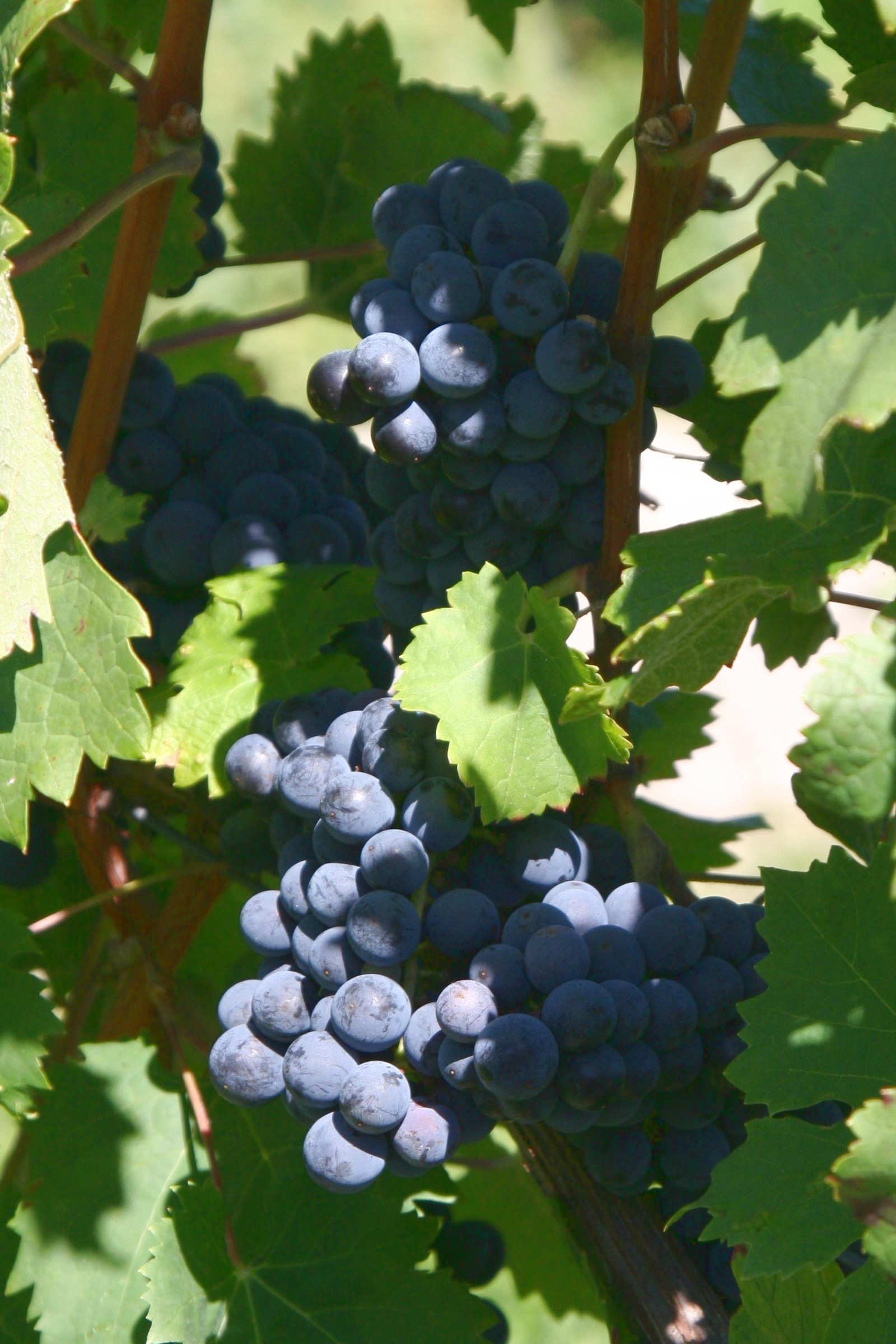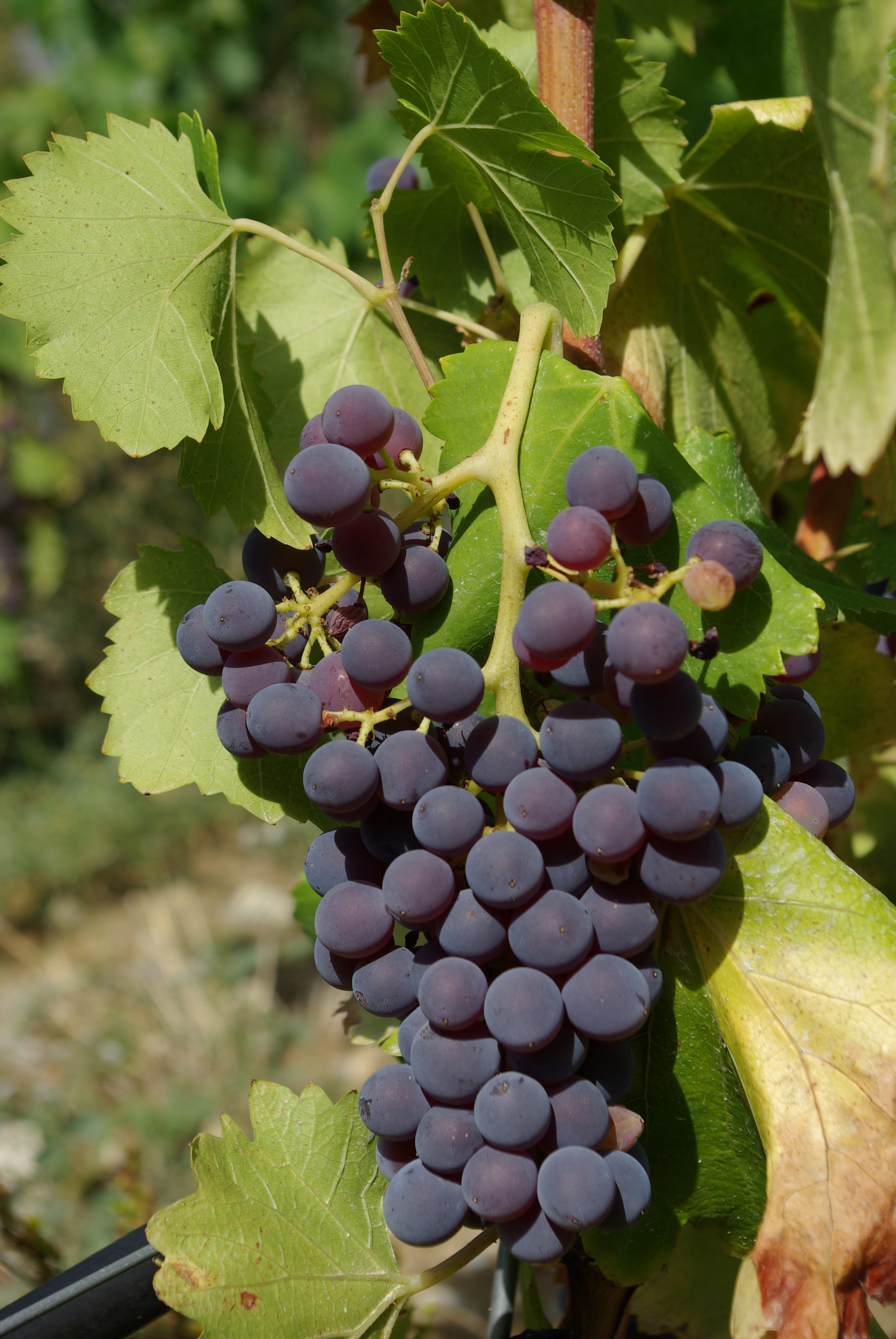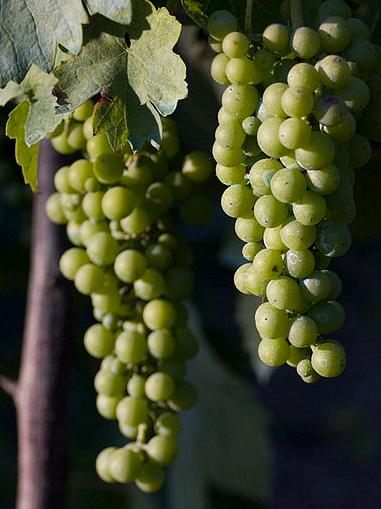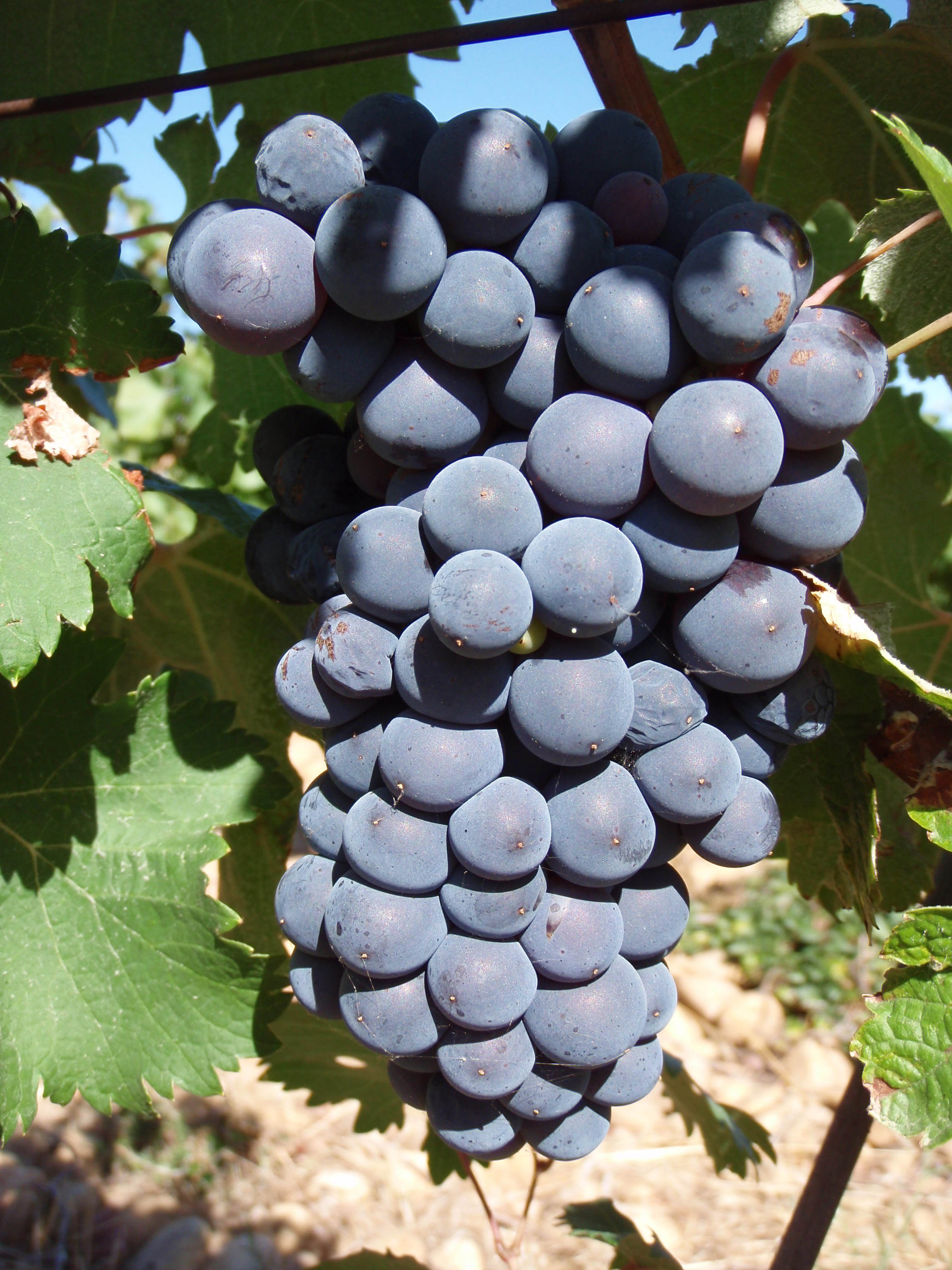|
El Dorado (AVA)
El Dorado is an American Viticultural Area (AVA) located in El Dorado County, California, east of the state’s capital, Sacramento and centered around the county seat of Placerville. It was established on November 14, 1983 by the Bureau of Alcohol, Tobacco, Firearms and Explosives (ATF), Treasury after approving the submitted petition from the El Dorado Wine Grape Growers Association of Camino, California applying to establish a viticultural area named "El Dorado.” The area includes parts of El Dorado County on the north border by the Middle Fork American River and on the south by the South Fork of the Cosumnes River. El Dorado viticultural area lies within the vast Sierra Foothills viticultural area, one of the largest appellations in California, which extends about through portions of Yuba, Nevada, Placer, El Dorado, Amador, Calaveras, Tuolumne and Mariposa Counties. The El Dorado viticultural area encompasses which entirely includes Fair Play and a small ... [...More Info...] [...Related Items...] OR: [Wikipedia] [Google] [Baidu] |
American Viticultural Area
An American Viticultural Area (AVA) is a designated wine grape-growing region in the United States, providing an official appellation for the mutual benefit of winery, wineries and consumers. Winemakers frequently want their consumers to know about the geographic pedigree of their wines, as wines from a particular area can possess distinctive characteristics. Consumers often seek out wines from specific AVAs, and certain wines of particular pedigrees can claim premium prices and loyal customers. If a wine is labeled with an AVA, at least 85% of the grapes that make up the wine must have been grown in the AVA, and the wine must be fully finished within the U.S. state, state where the AVA is located. Regulations Since 1980, the boundaries of AVAs were defined by the Bureau of Alcohol, Tobacco and Firearms , Bureau of Alcohol, Tobacco and Firearms (ATF), an independent bureau within the United States Department of the Treasury that received and handled petitions for viticultural ar ... [...More Info...] [...Related Items...] OR: [Wikipedia] [Google] [Baidu] |
Cabernet Sauvignon
Cabernet Sauvignon () is one of the world's most widely recognized red wine grape varieties. It is grown in nearly every major wine producing country among a diverse spectrum of climates from Australia and British Columbia, Canada to Lebanon's Beqaa Valley. This grape variety appeared in France in the 17th century as a result of natural crossbreeding. Its popularity is often attributed to its ease of cultivation—the grapes have thick skins and the vines are hardy and naturally low yielding, budding late to avoid frost and resistant to viticulture hazards. The classic profile of Cabernet Sauvignon tends to be full-bodied wines with high tannins and noticeable acidity that contributes to the wine's aging potential. In cool areas, it has flavors of blackcurrant and green pepper; in warmer places, it may taste like black cherry and olive; in very hot climates, it can have a jammy flavor. History and origins For many years, the origin of Cabernet Sauvignon was not cl ... [...More Info...] [...Related Items...] OR: [Wikipedia] [Google] [Baidu] |
Marsanne
Marsanne () is a white wine grape, most commonly found in the Northern Rhône region. It is often blended with Roussanne. In Savoie the grape is known as ''grosse roussette''. Outside France it is also grown in Switzerland (where it is known as ''ermitage blanc'' or just ''ermitage''), Spain (where it is known as ''Marsana''), Australia, New Zealand, Canada and the United States. Wine regions The grape most likely originated in the Northern Rhône region where it is widely planted today, more precisely in the village and abbey of Marsanne (Drôme). It is a principal component of the white wines from the Hermitage, Crozes-Hermitage and Saint-Joseph AOCs. It is the most widely planted white wine grape in the Hermitage AOC, where it is often blended with Roussanne. Along with Roussanne, up to 15% of Marsanne can be added to the red wine of Hermitage under ''Appellation d'origine contrôlée'' (AOC) regulations. In the Saint-Péray AOC, it is used for both still and sparkling ... [...More Info...] [...Related Items...] OR: [Wikipedia] [Google] [Baidu] |
Malbec
Malbec () is a purple grape variety used in making red wine. The grapes tend to have an inky dark color and robust tannins, and are known as one of the six grapes allowed in the blend of red Bordeaux wine. In France, plantations of Malbec are now found primarily in Cahors in South West France, though the grape is grown worldwide. It is also available as an Argentine varietal. The grape became less popular in Bordeaux after 1956 when frost killed off 75% of the crop. Despite Cahors being hit by the same frost, which devastated the vineyards, Malbec was replanted and continued to be popular in that area. Winemakers in the region frequently mixed Malbec with Merlot and Tannat to make dark, full-bodied wines, but have ventured into 100% Malbec varietal wines more recently.J. Robinson ''Vines, Grapes & Wines'' pg 198 & 204 Mitchell Beazley 1986 A popular but unconfirmed theory claims that Malbec is named after a Hungarian peasant who first spread the grape variety throughou ... [...More Info...] [...Related Items...] OR: [Wikipedia] [Google] [Baidu] |
Lagrein
Lagrein () is a red wine grape variety native to the valleys of South Tyrol, northern Italy. Along with Marzemino, it is a descendant of Teroldego, and related to Syrah, Pinot noir and Dureza. The name suggests its origins lie in the Lagarina valley of Trentino. It was mentioned as early as in the 17th century, in records of the Muri Abbey near Bolzano. Wine regions Cultivation of Lagrein in South Tyrol usually results in the tannic red wines Lagrein Scuro, or Lagrein Dunkel, or the fragrant rosé wines Lagrein Rosato, or Lagrein Kretzer. In recent years, winemaking techniques have changed, with shortened maceration periods and used oak to achieve less aggressive flavours. In Australia it is increasing in popularity, increasing from zero at the start of the century to about 40 producers currently, mostly in the cooler parts of the south-eastern states. Lagrein was pioneered in Australia by Peter May of Melbourne University’s Burnley Campus who discovered a couple of ... [...More Info...] [...Related Items...] OR: [Wikipedia] [Google] [Baidu] |
Grenache Blanc
Grenache blanc (; also known as garnatxa blanca in Catalonia) is a variety of white wine grape that is related to the red grape Grenache. It is mostly found in Rhône wine blends and in northeast Spain. Its wines are characterized by high alcohol and low acidity, with citrus and or herbaceous notes. Its vigor can lead to overproduction and flabbiness. However, if yields are controlled, it can contribute flavor and length to blends, particularly with Roussanne. Since the 1980s, it has been the fifth most widely planted white wine grape in France after Ugni blanc, Chardonnay, Semillon and Sauvignon blanc.J. Robinson (ed) ''The Oxford Companion to Wine'' Third Edition p. 334 Oxford University Press 2006 History Grenache blanc is thought to have originated as a mutation of the red version of Grenache in Spain. It then spread across the Pyrenees to France, finding a second home in the Rhône.Oz Clarke ''Encyclopedia of Grapes'' pg 113 Harcourt Books 2001 Wine regions Grenache bla ... [...More Info...] [...Related Items...] OR: [Wikipedia] [Google] [Baidu] |
Grenache Noir
Grenache (; ) or Garnacha () is one of the most widely planted red wine grape varieties in the world. Niels Lillelund: ''Rhône-Vinene'' p. 25, JP Bøger – JP/Politikens Forlagshus A/S, 2004. . It ripens late, so it needs hot, dry conditions such as those found in Spain, where the grape is believed to have originated. It is also grown in the Italian island of Sardinia, the south of France, Australia, and California's Monterey AVA, Paso Robles, Santa Barbara County and San Joaquin Valley. It is generally spicy, berry-flavored and soft on the palate and produces wine with a relatively high alcohol content, but it needs careful control of yields for best results. Characteristic flavor profiles on Grenache include red fruit flavors (raspberry and strawberry) with a subtle, white pepper spice note. Grenache wines are highly prone to oxidation, with even young examples having the potential to show browning (or "bricking") coloration that can be noticed around the rim when ev ... [...More Info...] [...Related Items...] OR: [Wikipedia] [Google] [Baidu] |
Graciano
Graciano is a Spanish red wine grape that is grown primarily in Rioja. The vine produces a low yield that are normally harvested in late October. The wine produced is characterized by its deep red color, strong aroma and ability to age well.J. Robinson ''Vines, Grapes & Wines'' pg 214 Mitchell Beazley 1986 Graciano thrives in warm, arid climates. Wine regions *In Australia, Graciano is used either in blends with Tempranillo or as varietal wines. *In France, the grape is grown in Languedoc-Roussillon as Morrastel or Courouillade and in Corsica as Minustello or Minustellu. *In Spain, the grape produces low yields, but it is a key component of Gran Reservas in Rioja and Navarra, contributing structure and aging potential. In the Rioja DO, 395 ha (0.7%) are planted with this variety. While primarily used as a blending partner, some Rioja bodegas produce varietal Graciano wines. *In California, Graciano is sometimes known as Xeres. *The grape is also grown in Argentina. ... [...More Info...] [...Related Items...] OR: [Wikipedia] [Google] [Baidu] |
Fiano (grape)
Fiano is a white Italian wine grape variety that is grown primarily in the Campania region of southern Italy and on the island of Sicily. In Campania, this fairly strong flavored white wine grape is particularly noted around Avellino where the ''Denominazione di origine controllata e Garantita'' (DOCG) wine of Fiano di Avellino is produced.Berry Bros. & Rudd - Fiano Grape Variety . The grape has a long history in the Campanian region and is believed to have been the grape behind the ancient Roman wine ''Apianum''. Even today, the name ''Apianum'' is permitted to appear on wine labels of the DOCG wine ... [...More Info...] [...Related Items...] OR: [Wikipedia] [Google] [Baidu] |
Counoise
Counoise is a dark-skinned wine grape grown primarily in the Rhône valley region of France. Counoise is also grown in California, Texas, New Jersey, and Washington. Counoise adds a peppery note and good acidity to a blended red wine, but does not have much depth of colour or tannin.Oz Clarke ''Encyclopedia of Grapes'' Harcourt Books 2001 There were of Counoise in France in 2000. Counoise is one of the grapes allowed into the blend of Châteauneuf-du-Pape wine. In 2004 only 0.5% of the appellation's area was planted with Counoise. Some producers who favour the variety use about 5% of it in their blends, and those account for most of the plantings. One such producer is Château de Beaucastel, which is noted for using all the 13 allowed varieties. Counoise and Aubun Counoise is easily confused with Aubun, because of a large similarity in the vineyards. Counoise and Aubun were also grown mixed in a field blend Viticulture (, "vine-growing"), viniculture (, "wine-growing ... [...More Info...] [...Related Items...] OR: [Wikipedia] [Google] [Baidu] |
Cinsault
Cinsaut or Cinsault ( , ) is a red wine grape whose heat tolerance and productivity make it important in Languedoc-Roussillon and the former French colonies of Algeria, Lebanon, and Morocco. It is often blended with grapes such as Grenache and Carignan to add softness and bouquet.Jancis Robinson, ''Vines, Grapes & Wines'' Mitchell Beazley 1986 It has many synonyms, of which perhaps the most confusing is its sale as a table grape called 'Oeillade', although it is different from the "true" Oeillade which is no longer cultivated. In South Africa, it was known as "Hermitage", hence the name of its most famous cross Pinotage. History Cinsaut appears to be an ancient variety that may have originated in the Hérault, but could equally have been brought by traders from the eastern Mediterranean. Distribution and wines Algeria Cinsaut is popular in Algeria for its drought resistance, and is used to make large volumes of wine. Australia Cinsaut is grown under a variety of names such ... [...More Info...] [...Related Items...] OR: [Wikipedia] [Google] [Baidu] |








